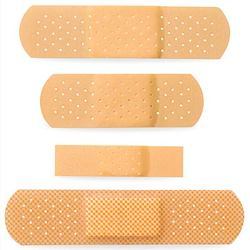On bandages
Past November, the Keuzegids Universiteiten 2017 was published in which Dutch bachelor studies were compared with each other and rated. According to this study, the position of Erasmus University has been declining due to unsuccessful (progressive) educational reforms such as switching to educating in smaller groups of students (Monster, 2016). This illustrates how the careful, step-by-step assemblage of learner-centered, progressive education in a traditional education environment can be counterproductive. Yet still, progressive education should be favored over traditional education due to its democratic, liberal nature, and its desire to cultivate virtues such as creativity, curiosity, compassion, skepticism, etc. (Kohn, 2008; Siemens, 2014; Vasquez Heilig, Cole & Aguilar, 2010). Research has demonstrated that students who not only memorize facts and practice skills, but are also dedicated to reflecting and deriving meaning from their experiences and are responsible for their own learning process, not only appreciate better what they are doing in school but are doing it better too (Kohn, 2008). Ergo, this paper pleas for a drastic, even rigorous change in further academic (art) education. Hybrid forms that supposedly combine the best of the both worlds — the traditional and the progressive — are simply for the faint-hearted. Compare it with taking off a bandage. You can do it quickly, which will hurt for a bit but from which you will recover with the same vigor. Or you can do it carefully and slowly, which will unnecessarily prolong agony.




Especially in Western societies, formal education has developed into an environment in which scores on standardized tests have come to dominate the attention of the educator and subsequently the student (Vasquez Heilig, et al., 2010). While the Greek regarded schooling as leisure, today it is predominantly viewed as required preparation for the labour market (Van den Dool, 2016). However, art education does not directly grant observable benefits for workers-to-be (Vasquez Heilig, et al., 2010). Instead, it provides knowledge and skills on a more holistic level, for instance by expanding ways in which students view and understand the world. Thus, next to its economic function, education serves an intellectual purpose (developing cognitive and analytical skills), a political purpose (teaching norms and citizenship), and a social purpose (fostering cultural integration and values) (Macionis & Plummer, 2012).
Hence, in a study program at a further academic level, education should not be approached the classical way through memorizing, standardized testing and grading. As Bresler (1994) shows, art education in the imitative, rote, teacher-centered orientation underlines values of accountability and high-stake testing while rejecting to stimulate students intellectually or emotionally. Luckily, she also presents an alternative: the expansive, higher-order cognitive orientation, which I advocate for here too. This orientation considers art a deliberate, complex activity for which merely interest or skills are not enough. It is highly student-centered, although some didactic teaching cannot be avoided in the initial stage. The educator tasks include providing knowledge to facilitate problem solving and nourish cognitive and emotional development through scaffolding. The educator should guide the students, but not stipulate action.
“Next to its economic function, education serves an intellectual purpose, a political purpose, and a social purpose.”
The Western world has long nurtured the habit of reducing things to numbers as can be seen portrayed by the ongoing power struggle between quantitative and qualitative research methods (Kohn, 2012). Advocates of the first feel confident enough to make generalizations for whole populations, but simply fall short on encompassing how and why questions that qualitative measures usually answer more profoundly. Despite so, in general there continues to be a preference for quantitative over qualitative research methods.
Opponents easily form caricatures of progressive educationists as romanticists who uphold the idea that “learning should be holistic and natural, presented in projects, not fragmented into isolated academic subjects” (Hirsch as cited by Reedy, 2007: 6) and who consider drilling and repetitive practicing boring and even destructive regarding students’ interest and curiosity. Attempting to falsify this notion, Reedy (2007: 7) argues that children actually enjoy repetition and uphold an “instinctive ability to master elementary facts”. Interestingly, by saying so, Reedy actually underlines what Gooch considers the Type B system of thought that acknowledges the subjective, the personal, the instinctive (Boyce-Tillman, 2004). This conflicts with Reedy’s plea for a Type A interpretation of education that centers on objectivity, impersonal logic, and knowledge based on proof and scientific evidence. Moreover, it should be explicitly stated that a progressive form of education is centered on the student. Consequently, if the student conveys a wish for drilling and repetitive practice, the educator should be able to facilitate this as well.
Opponents easily form caricatures of progressive educationists as romanticists who uphold the idea that “learning should be holistic and natural, presented in projects, not fragmented into isolated academic subjects” (Hirsch as cited by Reedy, 2007: 6) and who consider drilling and repetitive practicing boring and even destructive regarding students’ interest and curiosity. Attempting to falsify this notion, Reedy (2007: 7) argues that children actually enjoy repetition and uphold an “instinctive ability to master elementary facts”. Interestingly, by saying so, Reedy actually underlines what Gooch considers the Type B system of thought that acknowledges the subjective, the personal, the instinctive (Boyce-Tillman, 2004). This conflicts with Reedy’s plea for a Type A interpretation of education that centers on objectivity, impersonal logic, and knowledge based on proof and scientific evidence. Moreover, it should be explicitly stated that a progressive form of education is centered on the student. Consequently, if the student conveys a wish for drilling and repetitive practice, the educator should be able to facilitate this as well.

While students are responsible for becoming self-made learners, this kind of experiential learning is quite demanding of teachers in terms of requiring knowledge and expertise too. Implementation is difficult as its goals are furthest removed from today’s commonly accepted educational objectives (Bresler, 1994). Besides this, experiential learning requires teachers to let students learn from mistakes without interference (Kolb, Kolb, Passarelli & Sharma, 2014). Its philosophical foundation is based on James’ radical empiricism which considers that all begins and ends in the ongoing flux and flow of our experiences. In short, experiential education is the intricate relational process in which attention to the student and to the subject matter are balanced, whilst simultaneously balancing reflection on the profound meaning of concepts and the skills needed to apply them. Hence, not only students learn, but teachers too, as they balance between functioning as manager, organizer, facilitator, and learner. The educator role profile (ERP) provides a holistic approach to becoming an experiential educator based on the relationship between student and educator. The educator can be distinguished as facilitator (who assists the student to connect with personal experiences and reflect on them), subject expert (who assists the student to organize and link their reflections to the knowledge base of the subject), standard-setter/evaluator (who assists the student to grasp the application of knowledge and skill as is required for proper performance), and coach (who assists the student to apply expertise to achieve their goals). More importantly, all are needed for rich, saturated learning.
Vital to progressive learning, and which should be explicitly mentioned, is the non-directive power-relationship between educator and student. The relationship should not so much be seen as a hierarchical master-pupil exchange but rather as colleagues within a field. There are two things we should thus consider: firstly, that students are responsible for their own learning process, and secondly, that people learn within a social context and not per se in an internal, individualistic activity.
This progressive liberal philosophy starts from the individual. Students are responsible for their own learning process and as such, progressive schools require highly active learning. Active participation of students is needed for the design of the curriculum, formulating questions and searching for its answers, and evaluating their development as well as how successful the educator has been (Kohn, 2008). However, next to their independence, students should consider their interdependence on others in their environment. This notion leads to Siemens’ (2014) connectivism: integrating all that comes together from chaos, networks, complexity, and self-organization theories. It rests on the following: people uphold different opinions on learning and knowledge (1), the ability to learn is more important than what is already learned (2), learning happens in a process of connected nodes (e.g. people) (3), learning may too happen with non-human nodes (e.g. computers) (4), to stimulate on-going learning one has to nurture and sustain these connections (5), a core skill is to recognize connections between fields, ideas, and concepts (6), and lastly that deciding on what to learn and the meaning of incoming information is a learning process bounded to an ever-changing reality (what is right today, could be outdated tomorrow) (7).
On a concluding note, there are two objections one might have with this proposal. Firstly, that with a rigorous change from traditional to progressive education, it becomes intricate to measure students outcomes since progressive education does not lend for easy grading. But resulting from an obsession with numbers as outlined before, the emphasis on how well something is executed tends to distract us from asking whether an activity is sensible or ethical in the first place (1), numbered grades fuel competition between students rather than collaboration (2), and we run the risk of excluding that which is hard to quantify as merely subjective (despite tests being eventually subjectively assembled by a teacher’s decisions on what kind of questions, level of difficulty, weighing of each answer, etc.) (3) (Kohn, 2012). Contrastingly, a strength would be that progressive education considers learning as a process where the journey is more important than the destination.
Another limitation one could argue, is that not all students are cut out for this kind of education or willing to adjust to it. As mentioned before, students too may prefer traditional learning methods, for instance those who are doing well under the traditional format. However, education is not about taking the road with least resistance. When in comfort — in a safe haven — a student is not challenged to profoundly learn anything. Without (healthy) friction, no shine will arise. While the novice/expert-student argument is often brought up, this should not be an issue in further academic education either. All have an equal chance to apply to a certain program, but naturally, some are more ready than others to truly enter it. Learning is not about racing. Novices are simply not ready yet. But most importantly, those who do enter, will train to become active, outspoken, independent, critical thinkers. They will become true pioneers.
Resources
Boyce-Tillman, J. (2004). Towards an ecology of music education. Philosphy of Music Education Review, 12(2), 102-125.
Bresler, L. (1994). Imitative, complementary, and expansive: Three roles of visual arts curricula. Studies in Arts Education, 35(2), 90-104.
Kohn, A. (2008, Spring). Progressive education: Why it’s hard to beat, but also hard to find. Independent School, 67(3). Retrieved from http://www.alfiekohn.org/article/progressive-education/
Kohn, A. (2012, September). Schooling beyond measure. Education week, 32(4). Retrieved from http://www.alfiekohn.org/article/schooling-beyond-measure/
Kolb, A.Y., Kolb, D.A., Passarelli, A. & Sharma, G. (2014). On becoming an experiential educator: The educator role profile. Simulation & Gaming, 45(2), 204-234.
Macionis, J.J. & Plummer, K. (2012). Education. In Sociology: a global introduction (5th Ed.) Harlow: Pearson Education Limited (690-720).
Monster, J. (2016, 15 November). Keuzegids: Erasmus Universiteit gaat achteruit. Erasmus Magazine. Retrieved from https://www.erasmusmagazine.nl/2016/11/15/keuzegids-erasmus-universiteit-gaat-achteruit/
Reedy, J. (2007). The failure of progressive education and the return to classical models. Paper presented at the XIX International Conference on Philosophy, Samos. Retrieved from http://www.macalester.edu/~reedy/Samos07-ULTIssima-3%5B1%5D.pdf
Siemens, G. (2014). Connectivism: A learning theory for the digital age.
Van den Dool, J. (2016). Seminar 1: The what, why and how of arts education: An Introduction [Seminar notes].
Vasquez Heilig, J., Cole, H. & Aguilar, A. (2010). From Dewey to No Child Left Behind: The evolution and devolution of public arts education, Arts Education Policy Review, 111(4), 136-145.
Boyce-Tillman, J. (2004). Towards an ecology of music education. Philosphy of Music Education Review, 12(2), 102-125.
Bresler, L. (1994). Imitative, complementary, and expansive: Three roles of visual arts curricula. Studies in Arts Education, 35(2), 90-104.
Kohn, A. (2008, Spring). Progressive education: Why it’s hard to beat, but also hard to find. Independent School, 67(3). Retrieved from http://www.alfiekohn.org/article/progressive-education/
Kohn, A. (2012, September). Schooling beyond measure. Education week, 32(4). Retrieved from http://www.alfiekohn.org/article/schooling-beyond-measure/
Kolb, A.Y., Kolb, D.A., Passarelli, A. & Sharma, G. (2014). On becoming an experiential educator: The educator role profile. Simulation & Gaming, 45(2), 204-234.
Macionis, J.J. & Plummer, K. (2012). Education. In Sociology: a global introduction (5th Ed.) Harlow: Pearson Education Limited (690-720).
Monster, J. (2016, 15 November). Keuzegids: Erasmus Universiteit gaat achteruit. Erasmus Magazine. Retrieved from https://www.erasmusmagazine.nl/2016/11/15/keuzegids-erasmus-universiteit-gaat-achteruit/
Reedy, J. (2007). The failure of progressive education and the return to classical models. Paper presented at the XIX International Conference on Philosophy, Samos. Retrieved from http://www.macalester.edu/~reedy/Samos07-ULTIssima-3%5B1%5D.pdf
Siemens, G. (2014). Connectivism: A learning theory for the digital age.
Van den Dool, J. (2016). Seminar 1: The what, why and how of arts education: An Introduction [Seminar notes].
Vasquez Heilig, J., Cole, H. & Aguilar, A. (2010). From Dewey to No Child Left Behind: The evolution and devolution of public arts education, Arts Education Policy Review, 111(4), 136-145.